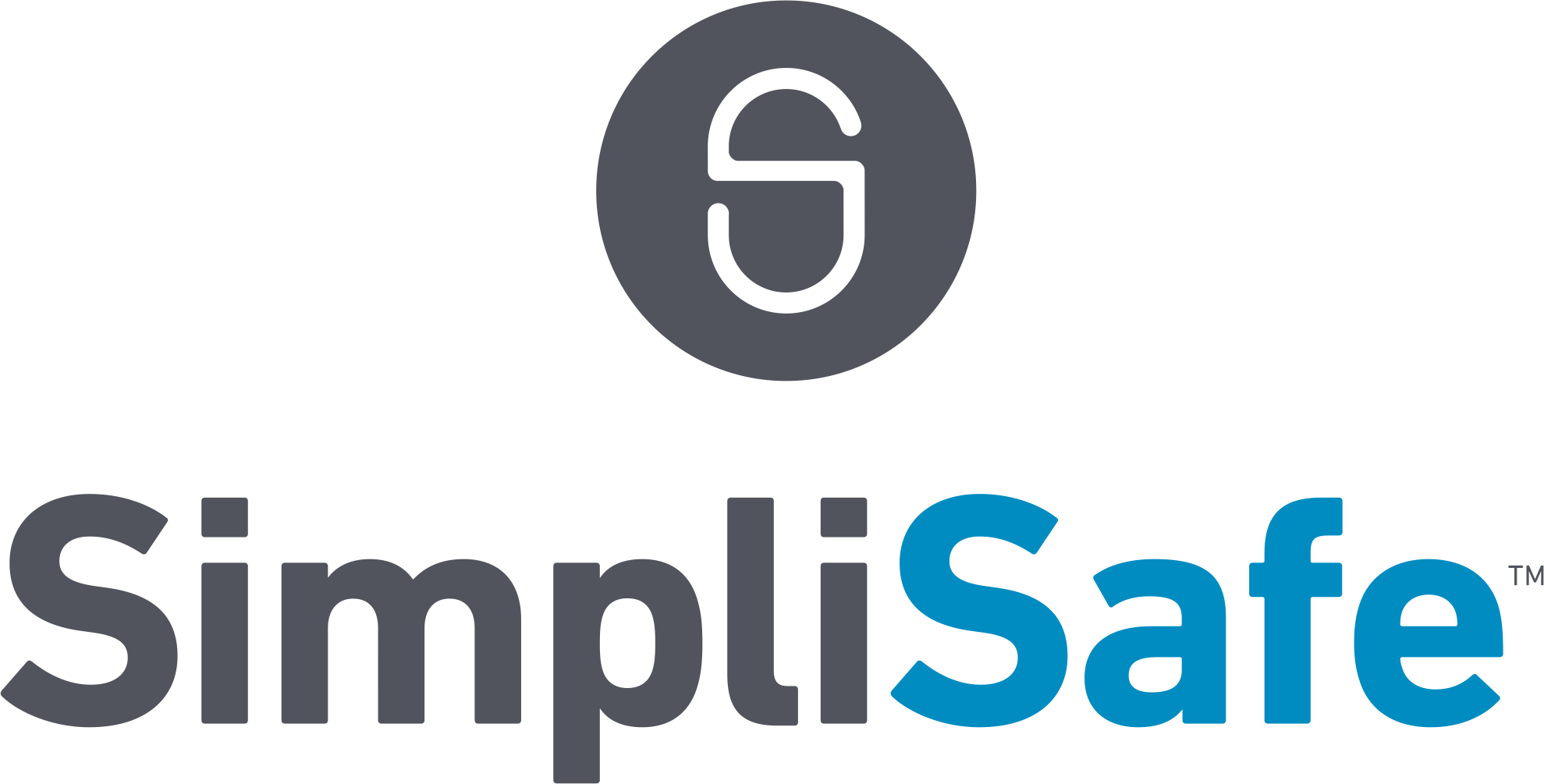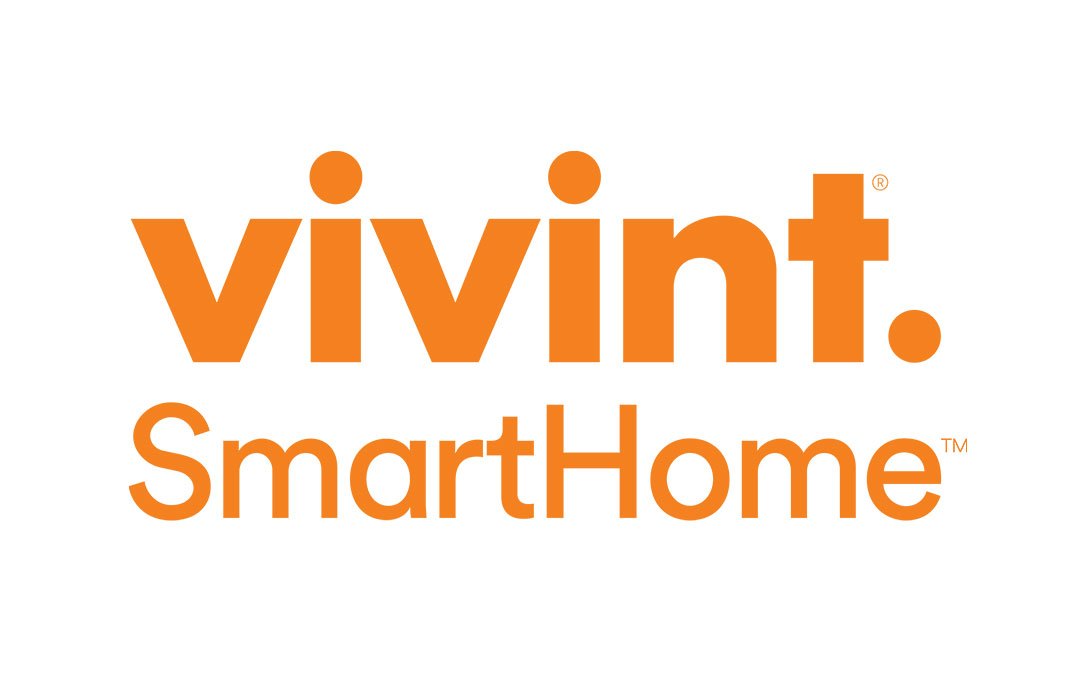It’s sad to say that we live in an unsafe world. While we’d all love to go superhero and rid the world of all evil, it’s just not possible… for some of us, at least. The next best thing is to get a home security system. One that will give you comfort and confidence that your family stays protected in their safe place. Fortunately for you and me, the best home security system isn’t going to cost thousands of dollars. Unfortunately, competition is quite fierce in this category so you’ll have to sift through quite a few companies before you find the right one for you. To ease your burden, we tried and tested the most popular home security systems. The results of all our hard work and burglary skills are listed below.
Top 5 Home Security Systems Of 2020 Reviewed
1. ADT
 Best Home Security System Brand
Best Home Security System Brand  ADT is easily the most popular provider of home security systems in the US because it has been around for 140 years. They have authorized resellers in different areas to allow them to have a wider reach across the country. They have multiple monitoring centers that run 24/7 to ensure they rarely experience service outage. If you want to warn off people from even considering your home as a target, the ADT sign is probably one of the best deterrents due to brand recognition.
ADT is easily the most popular provider of home security systems in the US because it has been around for 140 years. They have authorized resellers in different areas to allow them to have a wider reach across the country. They have multiple monitoring centers that run 24/7 to ensure they rarely experience service outage. If you want to warn off people from even considering your home as a target, the ADT sign is probably one of the best deterrents due to brand recognition.
| Basic | Basic Wireless | ADT Pulse | ADT Pulse + Video | |
| Price | $27.99/month | $48.99/month | $52.99/month | $58.99/month |
| 24/7 Monitoring | Yes | Yes | Yes | Yes |
| Services | Security Monitoring (landline required) |
|
|
|
| Installation Fee | $99 | averaging $500 to $1,000 | averaging $1,000 to $1,500 | averaging $1,000 upwards |
| Equipment Fee | None but you’ll need to sign up for 36 months | None but you’ll need to sign up for 36 months | Depends on your customization | Depends on your customization |
| Equipment |
|
|
|
|
ADT offers a wide range of equipment options from the basic and traditional to the sophisticated and tricked out system. One of the best things about ADT is that they’ll try to customize your home security system to include all the features you want. Of course, you’ll most likely end up with a very high upfront cost. But the company does offer a lot of benefits to signing up with them. One of which is its 6-Month Money-Back Guarantee. The other benefit that’s worth mentioning is the $500 Theft Protection. This means that ADT will pay up to $500 of your insurance deductible in the event that your house gets robbed while your system is armed. Another thing that makes ADT stand out is their 24/7 customer service which is totally different from 24/7 monitoring. Most security companies will offer the latter but have limited hours for their customer service; in short, most of them do not have customer service reps available at night to answer concerns like broken monitoring equipment or a false alarm.
What we don’t like about ADT is that customer experience and pricing may differ depending on your local vendor. So be sure to check out what’s on offer in your location. Also, some special offers are not available depending on your location such as same-day installation. And if you’re a fan of DIY as well as self-monitoring, then ADT really isn’t for you. Renters should also be wary of getting ADT because it requires you to sign a 3-year contract that will cost you a lot (75% of the remaining contract) if you terminate before your contract ends.
2. SimpliSafe
 Best Home Security System for Renters
Best Home Security System for Renters  If you’re wary of making a commitment or want to go with the simple, DIY route, then SimpliSafe may be the right choice for you. With SimpliSafe, you are the one in control. You buy the equipment upfront which means you own it. Every. Single. Piece. This also means you can install it the way you want and it takes less than an hour to do so. You can take it with you if you move to a new location.
If you’re wary of making a commitment or want to go with the simple, DIY route, then SimpliSafe may be the right choice for you. With SimpliSafe, you are the one in control. You buy the equipment upfront which means you own it. Every. Single. Piece. This also means you can install it the way you want and it takes less than an hour to do so. You can take it with you if you move to a new location.
| The Foundation | The Essentials | The Hearth | The Knox | The Haven | The Oakhaven | |
| Upfront Cost | $229.96 | $259.95 | $374.91 | $449.87 | $489.86 | $499 |
| Equipment |
|
|
|
|
|
|
| Standard 24/7 Monitoring | Interactive 24/7 Monitoring | |
| Price | 50 cents/day | 83 cents/day |
| Features |
|
|
And you don’t get stuck with a long-term contract. You can opt to customize your security system or go with any of the pre-packaged kits offered. You can have professionals monitor your system or do it on your own. The best part is that they offer a 60-day money back guarantee. If you aren’t 100% satisfied with the product, you can return it for a full refund and the company even pays for the return shipping.
What we love about SimpliSafe is that they seem to think about everything that could possibly happen and try to find a way to prevent it. Does burglar smash your keypad? It’ll still send an alert to the monitoring company. Power outage? Backup battery lasts a full 24 hours. Weak cell signal? There’s a Wi-Fi backup installed. The monitoring center has a service outage?
There are 5 more to back it up. Hacker/robber outside your home? All signals from each component and device are encrypted. Pets in the house? Well, their motion detectors are specifically designed to detect the “unique heat signature of humans” to prevent your pet from triggering the alarm.
There are plenty of options to choose from, ranging from basic camera surveillance to everything-but-the-kitchen-sink package. The company even offers refurbished systems that will give you 25-30% savings.
However, SimpliSafe does not have home automation features. And you’ll need to cough up a lot of money initially to pay for the equipment instead of having it spread over a number of months. Also, if you need customer service help, you’ll have to call between the hours of 9 a.m. to 6 p.m. EST.
3. Frontpoint

 Best DIY Home Security System When it comes to customer service, no one does it better than Frontpoint. You always get straightforward service. They have a low-pressure sales approach. You won’t get pressured to buy any upgrades while on the phone. And they’re so incredibly polite, patient, and helpful every time that it can make you feel guilty that you’re not buying more from them.
Best DIY Home Security System When it comes to customer service, no one does it better than Frontpoint. You always get straightforward service. They have a low-pressure sales approach. You won’t get pressured to buy any upgrades while on the phone. And they’re so incredibly polite, patient, and helpful every time that it can make you feel guilty that you’re not buying more from them.
| Protection Plan | Interactive Plan | Ultimate Plan | |
| Price | $34.99/month | $44.99/month | $49.99/month |
| Equipment costs | start at $99.95 (free if you sign up for 36 months) | starts at $99.95 (free if you sign up for 36 months) | starts at $279 (free if you sign up for 36 months) |
| Activation Cost | $99 | $199 | $199 |
| Features |
|
Protection Plan
+
|
Interactive Plan
+
|
Another great thing about is their 30-day risk-free trial where you can get a full refund plus covered return shipping costs if you’re not happy with what you got. The equipment is not proprietary which means you don’t have to stick with Frontpoint monitoring if you don’t want to. DIY installation is a breeze.
The one thing that we didn’t like about Frontpoint is their long-term contract (1 year and 3 years) and cancellation fee. If for some reason you decide that you want to cancel the contract before the term ends, you’ll be required to pay 80% of the cost for the remaining months.
Also, there are no landline or broadband options which means if you’re in a rural area where Wi-Fi is unreliable and cell towers are far, far away, you can’t choose this security system. One thing to note about Frontpoint is that they’ll check your credit score and price their equipment accordingly. This means that if you want to get the lowest price possible, you’ll need a credit score of at least 600.
4. Vivint

 Best Home Security System For the Money If you’re looking for a security system that offers superior home automation options, Vivint is the only choice for you. Aside from providing you with wireless home security and 24/7 continuous video recording, you can remotely control a lot of things inside your home including locking doors, closing garage doors, arming your security system, turning lights on/or off, and adjust the thermostat. It is also Z-Wave/ZigBee compatible and works with both Alexa and Google Home.
Best Home Security System For the Money If you’re looking for a security system that offers superior home automation options, Vivint is the only choice for you. Aside from providing you with wireless home security and 24/7 continuous video recording, you can remotely control a lot of things inside your home including locking doors, closing garage doors, arming your security system, turning lights on/or off, and adjust the thermostat. It is also Z-Wave/ZigBee compatible and works with both Alexa and Google Home.
| Smart Home | Smart Home Video | |
| Price per Month | $39.99 | $49.99 |
| 100% Wireless and Cellular | Yes | Yes |
| Equipment Fee | $549.99 | $549.99 |
| Installation Fee | $49.99 | $49.99 |
| Contract | Up to 60 months | Up to 60 months |
| Equipment included |
|
|
| Extra Features (additional cost) |
|
|
We love the fact that the system is very intuitive. It’s not hard to learn how to use the system once it’s installed. By a professional, of course, which costs you $49.99. There’s no DIY option here. You get cellular monitoring, two-way voice communication (you can talk to the monitoring center through the control box up to 75 feet away).
Another great advantage has over the rest of its competitors is its Flex Pay which allows you to choose between paying for the equipment upfront with no contract and monthly cost or you can finance the equipment at 0% interest over a period of 42 months or 60 months. The second option comes with a contract which, if you cancel before the end of the term, will cost you 100% of the remaining months.
Each package comes with a Vivint SkyControl Panel which has a 7-inch touchscreen, the Vivint Sky App, two door/window sensors, a motion detector, and Vivint 24/7 monitoring. The packages start at $39.99/month.
The base system costs $549. For $49.99 per month, you can get the Smart Home plan which may include two or more of these features: Kwikset Smart Locks, Amazon Echo, Vivint Ping Camera, Linear Garage Door Control, Vivint Element Thermostat, and the Vivint Doorbell Camera. You can opt to monitor the system on your own. However, you don’t get to use the mobile app and lose the 24/7 tech support.
If you want to see if Vivint is for you, you can get a free in-home consultation where the sales rep can show you exactly what their system can do for you. And unlike some of its competitors, Vivint gives you to option not to commit if you don’t want to.
Like Frontpoint, there are no landline and broadband options so this may not be the best choice for you if you live in a rural area. Unlike Frontpoint, Vivint used to employ aggressive sales practices that caused them to get charged with misrepresentation and deceptive sales tactics in multiple states. Fortunately, their customer service has improved and their BBB rating is no a “B.”
5. Protect America

 Best Economical Home Security System Families on a budget can get a solid home security system for just $19.99 per month through Protect America. Once you sign up, the rate you get is locked in for life so you never have to worry about price increases. Plus, you get lifetime equipment warranty. Protect America is one of the few providers that offer all three monitoring connections – landline, broadband, and cellular. Installation is DIY and you can even get a free moving kit if you need to relocate and want to take the system with you.
Best Economical Home Security System Families on a budget can get a solid home security system for just $19.99 per month through Protect America. Once you sign up, the rate you get is locked in for life so you never have to worry about price increases. Plus, you get lifetime equipment warranty. Protect America is one of the few providers that offer all three monitoring connections – landline, broadband, and cellular. Installation is DIY and you can even get a free moving kit if you need to relocate and want to take the system with you.
| Plan | Copper | Bronze | Silver | Gold | Platinum |
| Landline Monitoring | $19.99/mo. | $35.99/mo. | $37.99/mo. | $39.99/mo. | $42.99/mo. |
| Broadband Monitoring | $41.99/mo. | $47.99/mo. | $49.99/mo. | $51.99/mo. | $54.99/mo. |
| Cellular Monitoring | $41.99/mo. | $47.99/mo. | $49.99/mo. | $51.99/mo. | $54.99/mo. |
| Equipment Fee | $99 | $99 | $99 | $99 | $99 |
| Control Panel | 1 | 1 | 1 | 1 | 1 |
| Door/window sensors | 3 | 6 | 9 | 11 | 14 |
| Motion Detector | 1 | 1 | 1 | 1 | 1 |
| 24/7 Monitoring | Yes | Yes | Yes | Yes | Yes |
| Fire Monitoring | $9.99/mo. | $9.99/mo. | $9.99/mo. | $9.99/mo. | $9.99/mo. |
| Video Monitoring | $9.99/mo. | $9.99/mo. | $9.99/mo. | $9.99/mo. | $9.99/mo. |
One of the reasons why we love Protect America is that it doesn’t charge you any upfront costs such as activation fees or installation fees. With each package offered, you get the basic equipment (a control panel, door and window sensors, and a motion detector) for $99. The price of the package changes depending on how many door/window sensors you need and what kind of monitoring you want. If you want to add more equipment not included in the basic package, you’ll need to get the higher tier plans.
What about home automation? Well, Protect America offers these features too such as remote door locking. And you can customize the plans to your liking, mixing and matching what you need with what you can afford. However, doing so can get a bit confusing, leaving you to wonder how you got a cheap $20/month to one that costs $49.99/month. But if you sign up and find a lower price, the company will match it.
While the landline monitoring might be cheap, the cost per equipment is quite pricey and so is the cellular monitoring. Plus, you do need to sign up for 36 months. Also, unlike some of our picks, Protect America has a small return period – only 14 days. If you do return the equipment, you’ll need to pay for shipping fees. They used to charge a $79 restocking fee but they waived it (thank the Lord for small blessings, eh?).
Now, if you do want to cancel your contract as soon as the contract ends, you’ll need to notify them 60 days prior to expiration or else they’ll renew the contract automatically. If you were successful, you can then switch to a month-to-month subscription. However, if you do plan to cancel without completing the 36 months, you’ll need to pay 100% of the remaining contract.
How to Choose the Best Home Security System: the Ultimate Buying Guide
Roughly 2.5 million burglaries occur each year and 66% of those are home break-ins. This means that there is a burglary happening every 13 seconds. And here’s another startling fact: most burglaries happen between 10am and 3pm when most people are away from their homes. Let’s add one more: according to a survey conducted by the University of North Carolina at Charlotte’s Department of Criminal Justice and Criminology, around 60% of the burglars surveyed indicated that a home security system would cause them to look for a different target.
Obviously, you need to invest in a home security system as soon as possible. According to the FBI’s crime analysts, almost 90% of home break-ins can be prevented by making your home less attractive to a burglar through the use of a home security system. The question is, which one should you go with? Well, we’ve created just the guide to help. Below, we break down the most important considerations when choosing a home security system and the various features that you can and cannot live without, depending on your needs and lifestyle.
How Exactly Does a Home Security Work?
It’s a smart buying practice to actually know how a product works before you consider buying it. That way, you know exactly what you’re getting and what you’re not. So, let’s get down to the basics.
- Door and window sensors: Any home security system will have sensors located at the doors and windows. Basically, wherever a burglar may enter. Now, sensors are typical circuits made up of two components with opposing charges. Aligned together, these components will either form a closed circuit or open circuit depending on the design used. With a closed circuit, electricity flows when the door is shut. Opening the door breaks that flow and relays that information to the control panel so that the alarm is triggered. With an open circuit, opening the door (or window) starts the flow of electricity which, in turn, triggers the alarm.
- Motion detectors: as the name already implies, these can detect movement in an area using 3 different technologies. A radar-based motion detector sends out ultrasonic sound waves that it will use to sense reflective energy. A disturbance in the reflection pattern that it receives will trigger the alarm. A photo-sensor one will use a focused light (typically a laser beam) and a light sensor. When the path of the beam to the sensor is blocked even briefly, it will send a signal to the control box. The most advanced type is the passive infrared (PIR) motion detector which detects the infrared energy given off by the human body. Anyone passing by the sensor will emit heat and this sudden increase in infrared energy will trigger the alarm. Motion detectors are typically placed in rooms where valuables are stored or in low traffic areas in the home.
- Alarm: sounding the alarm can mean different things depending on your security system. There’s the high-decibel siren or alarm which will alert occupants of the house as well as neighbors that intruders are present. The siren will also drive the intruder away and let the police know which house was broken into. Aside from the siren, the control panel may also activate a telephone auto-dialer which may directly call the police and gives them a pre-recorded message that states the address of the house. Or, this auto-dialer may call the security company and the control box will relay the necessary information such as which sensors were triggered. The security company, in turn, can call the police.
- Control box: The brain of your home security system. It communicates with all the different components of your security system, triggering the alarm if one or more points have been breached, and informs the monitoring company or proper authorities of the breach. It may feature a keypad that allows the homeowner to input a code that will arm/disarm the system. It may be able to receive voice commands or work with wireless remote controls (key fob). In short, this is the primary controller of your home security system.
- Stickers and Signs: some security companies also include window stickers and/or yard signs that notifies anyone looking that the home is protected. It’s like the “Beware of Dog” sign. Often, these signs and stickers are enough to deter burglars from targeting your home.
- Security cameras: some systems will include surveillance cameras that can monitor hard to see areas around your property, remote buildings like garages and barns, and entry points. You can access the feed of these cameras using your computer or a mobile device. These can be used to watch for deliveries or watch over service personnel such as caregivers. They can be used to monitor children in the home. And they can record security breaches which can help in identifying the burglar, maybe even the vehicle he/she used to get to your house.
Hardwired or Wireless?
Years ago, the only way that you could get a home alarm system installed is to hardwire it into your home. This type of home security system uses physical wires to connect your sensors, keypad, smoke detectors, power supply, and control panel which means that it will need to be connected to your house’s internal wiring system. A benefit of having a wired system is that it is more reliable since there is little chance of interference from other devices because signals are sent through the wires.
However, you will need professional help in installing this. Hopefully, you also have the wiring already in place. Otherwise, you’ll be making holes on your wall. Another benefit to using a hardwired system is that it is less vulnerable to hacking. The third benefit to this traditional system is that it can be used anywhere, specifically in rural areas where network coverage is weak or totally absent.
However, there are some big drawbacks to this kind of system. Aside from being expensive to install, it’s more easily disabled by a burglar because he/she can just cut the phone lines outside the house to shut down your system. Also, you can’t really bring it with you if you move. If you’re renting a place, it’s best if you skip this kind of system.
Wireless systems, on the other hand, does not use physical wiring as the name states. Instead, it makes use of a form of wireless communication such as WiFi, Bluetooth, Radio, or Cellular to send signals.
Compared to a hardwired system, a wireless one is easier to install and can be relocated to different points of the house or moved to a different house because they are not tethered by the wiring. And since this is wireless, you don’t have to worry about a burglar cutting your phone line and leaving your house vulnerable. Also, wireless systems are easily upgraded as well as capable of home automation.
However, this type of system is vulnerable to interference such as when the WiFi gets randomly disconnected. Several things such as walls and metal cabinets can cause the communication to fail. Wireless devices are powered by batteries so you’ll need to change them from time to time. Also, signals are affected by the distance of the components from each other. Wireless systems are also vulnerable to hacking. If the signals sent from the sensors to the control box are not encrypted, if your router is not encrypted, or if your WiFi password is not strong enough, a tech-savvy burglar just might get in.
Some security companies offer both types of systems such as ADT while others like SimpliSafe are completely wireless.
Let’s Talk About Monitoring
There are two topics that we’ll be dealing with when it comes to monitoring. Right now, we’re going to be talking about the monitoring technology – the heart of any alarm system. The monitoring technology or method used by a home security system is one of three different types – landline, broadband, and cellular.
Landline
Landline monitoring is simple. Your alarm system uses your phone line to communicate with the monitoring center when there is a breach. This type of monitoring requires a hardwired installation. However, the problem with this method is its vulnerability. Burglars can just cut the phone line outside your home and your system is now down. Also, the components of your security system (i.e. sensors) rely on electricity so if there’s a power outage, your security system is out as well. That is unless your security system has backup batteries included. Also, you can’t use remote control services through home automation. One huge benefit to this traditional monitoring is that it’s cheaper than the others. Also, it’s available in rural locations where cellular signals are weak or non-existent.
Broadband
Broadband monitoring uses your internet connection to notify your monitoring station if the alarm is triggered. Compared to a landline, this type of connection is more expensive. But it’s also safer and faster. Plus, you can add home automation features such as remote access. Because this is a wireless system, you can move your sensors around the house if you wish to. However, the problem with this is that it relies on your internet connection. Lapses in connectivity due to an unreliable internet connection can make your house vulnerable. Power outages will also leave your house open to burglars. No power = no router = no internet.
Cellular
The most expensive option but also the safest, fastest, and most reliable. This type of connection uses a cellular uplink to send alarm signals to your monitoring center. Because it does not rely on wires or on electricity, it is less vulnerable to tampering; you don’t need to worry about cut phone lines and power lines. Power outages are also not a big deal anymore. Cellular monitoring is also easier to install and allows you to stay constantly connected to your system through an app. However, there is one drawback to this type of monitoring aside from the cost. You’ll need to have cellular coverage where you live. If you don’t, then this kind of system is not for you.
Professionally Monitored or Not?
Professional monitoring is when you pay a security company to monitor your system 24/7. They will be alerted by the system whenever there is a security problem in your home. Depending on the protocol, the security expert may contact you through the control panel if it features 2-Way Voice communication or calls the emergency contact number you listed. Once they determine the emergency, they will contact the appropriate emergency response personnel near you such as the police or firefighters.
The best thing about a monitored alarm system is that when you are notified by the security company, you have peace of mind that help is on the way. This is especially important if you’re in a dangerous situation and have no time to call for help on your own. However, you will need to pay a monthly fee for this service. And you’ll need to make sure that the monitoring company is compatible with the system you have installed. Most security companies like Frontpoint offer 24/7 monitoring for a monthly fee. But unlike others, it has non-proprietary equipment which means you can shop around for an alternative option.
An unmonitored or self-monitored system is when you are responsible for calling 911 and getting help. If there is a breach of your security, you will receive a text or push notification and the rest is up to you. The great thing about a self-monitored system is that you don’t incur a monthly fee. However, if you aren’t able to receive an alert or respond to it for any reason (e.g. phone battery is dead) then there’s a high chance that the proper authorities will not reach your home in time. SimpliSafe allows you to monitor your security on your own if that’s your wish. You can also choose to have them monitor it for you on a month-to-month basis.
DIY or Professional?
One of the most important considerations in choosing the right home security system is installed. Specifically, how will you install it? Does it require a professional or can you do it on your own? Both processes have their own pros and cons. Ultimately, your decision will depend on what you prefer and what you can do.
Professional installation means having someone else take care of the entire installation process. You don’t need to do anything but watch them work (or not). With a professional, he/she will be the one to assess the optimal locations for the sensors and control box. They can let you know the ins and outs of the system. And you’ll have the assurance that everything was done right. However, it will cost you a considerable amount. Also, you’ll most likely need to take off work for a day to stay home and let the security guys in. Our number one pick, ADT, will require you to have your system installed by their technicians.
When you go the DIY route, you’re the one holding the wheel. You get to decide where the sensors go, etc. If you did it on your own, you get to familiarize yourself with the system right away. A lot of DIY systems are pretty easy to install. And you’re more able to remove your security system on your own if you need to relocate. Plus, you get to save money. However, there’s a chance that you weren’t able to install your system correctly. And if you get lost or confused during the installation process, it may get frustrating if you have to rely on troubleshooting help through the phone.
Are You the Techie Type?
If you’re a techie, then you’ll want your home security system to be part of your smart home. This means allowing you to control the system remotely through your smartphone, tablet, or computer-like turning on/off the lights, turning down the temperature, etc. This can also mean having your system interact/connect with Alexa, Google Assistant, or IFTTT applications. In order to get home automation features, you’ll need to consider getting a larger budget because these tend to only be offered in higher-tiered packages. If you want to go with the basic first and upgrade in the future, you’ll need to make sure that the company you chose allows you to do this AND has the features you want to add. One of the biggest drawbacks to using SimpliSafe is its lack of home automation features.
How’s the Customer Experience?
When you’re making a large purchase, it’s always important to look at the company’s customer service. You’ll want to know that every time you need help, they’ve got your back. When it comes to buying a home security system, you need to know that you’re going to be dealing with attentive and knowledgeable representatives. After all, this is a long-term investment AND a critical part of the safety of you and your family. Make sure to check online reviews and sites like Consumer Affairs and Consumer Reports to get feedback on how the company operates. You’ll also need to get firsthand experience to check if what you’ve read is true so give the company a call. While a bad review here and there is inevitable, too many should raise an alarm in your head. We’ve found that Frontpoint gives the best customer service on our list but only ADT can be accessed 24/7.
Bells and whistles?
We’ve already discussed the basic features of any home security system. What else is there? Well, a lot actually. You may get these additional features as optional add-ons or as part of your package/plan. The bells and whistles we listed below are the most useful you’ll find in the market.
- Glass break detectors: some burglars are smart enough to know that windows have sensors that will trigger if they open them. So, they create an entry point that will not require them to open anything by shattering the glass. This type of detector will recognize the sound frequency of glass breaking and trigger an alarm.
- Shock sensors: detects jarring impact or vibrations such as when there is an earthquake or when someone is trying to move secured objects.
- Heat sensor: detects a sudden increase in temperature to let you know if there’s a fire.
- Flood sensor: detects water levels and alerts you if there’s potential flooding or leaks.
- Freeze sensor: detects when the temperature becomes too low which can cause pipes to freeze.
- Carbon Monoxide (CO) Detector: monitors the amount of CO in your house and warns you if it has reached a dangerous level.
- Smoke detector: detects the presence of smoke particles and alert you to a potentially dangerous situation.
Pricing and packages
A home security system is an investment and should be treated accordingly. It is important that you do your research on the various pricing options and packages offered by a security company. Keep in mind that there may be additional fees – activation fee, service fee, relocation fee, cancellation fee. These “extra” charges will vary depending on the company. In some cases, you can have some, if not all, of these fees, waived.
The package features will show you what you’re getting for what you’re paying. You need to look at the different features offered in each package to get a better idea of which one will suit your needs best. Home automation features will typically be in the package that costs more. Vivint, for example, costs more than others but they also offer the best home automation features. Looking at the different packages will also give you insight into all the features that a company offers and whether you can upgrade in the future or consider a different provider.
As you can see, there’s a lot involved when it comes to finding the right home security system. A lot of the considerations will depend on your specific needs and lifestyle. And because there’s a lot of information to sift through, things might get too jumbled in your head. We suggest that you create a spreadsheet and list down the important details so you can easily do comparisons. If you don’t have the time to do so, here’s a comparison table of our three top picks to help you out:
| ADT | SimpliSafe | Frontpoint | |
| Lowest Monthly Price | $27.99 | $14.99 | $34.99 |
| Upfront Cost | Starts at $99 | Starts at $229 | Start at $99.99 |
| Monitoring Contract Required | Yes | No | Yes |
| Trial Period | Depends on dealer | 60-day money back guarantee | 30-day money back guarantee |
| Live Chat | Yes | No | No |
| Installation | Professional required | DIY | DIY |
| Activation fee | $99+ | None | $99.95 to $199 |
| Cellular Backup | Yes | Yes | Yes |
| Cancellation Policy | Pay 75% of the remaining contract | No fees | Pay 80% of the remaining contract |
| Power Outage Backup | Yes | Yes | Yes |
| Environmental Sensors | Yes | Yes | Yes |
| IFTTT Support | No | No | No |
| Z-Wave/Z-Zigbee Compatibility | Yes | No | Yes |
| Voice Assistant Compatibility | Amazon Alexa | Amazon Alexa | Amazon Alexa |

















![Best Crochet Hooks for Beginners and Pros [2020 Update] best crochet books](https://www.awebtoknow.com/wp-content/uploads/2018/01/best-crochet-books-100x70.jpg)


